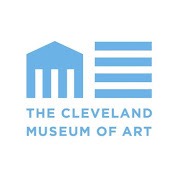Image Unavailable
This image is presented as a "thumbnail" because it is protected by copyright. The museum respects the rights of artists who retain the copyright to their work.
Display Cloth (tapis): Koumi Diosseni Kandian (Koumi Diossé, The Long-Necked)
1987
Nakunte Diarra
Nakunte Diarra (Malian, c. 1941–2020)
Textiles
Display Cloth (tapis): Koumi Diosseni Kandian (Koumi Diossé, The Long-Necked), 1987. Nakunte Diarra (Malian, c. 1941–2020). Cotton and dye; overall: 155.6 x 170.8 cm (61 1/4 x 67 1/4 in.). The Cleveland Museum of Art, Gift of Barbara G. Hoffman and Michael R. Short 2016.48 Considered the greatest bògòlanfiniw artist, Nakunte Diarra innovated on the cloth painting and dyeing skills she learned from Sojo Coulibaly, her aunt. Covered with symbols that have proverbial and historical meaning, bògòlanfiniw was believed to have had protective powers. Diarra intended this work as a wall hanging, a nontraditional format she promoted to preserve this textile heritage. The central pattern, Koumi Diosseni Kandian (center, running horizontally and vertically), has a historical meaning. Translated as “Koumi Diossé, The Long-Necked,” it references the Bamana anti-colonial hero Koumi Diossé (1840–1915, also known as Diossé Djan or Diossé Traoré), who died fighting the French in the former Bélédogou region. The design’s two diamonds joined by parallel lines evoke his actual long neck. This bògòlanfini contains many named patterns in addition to its primary motif, including Turusina (Mt. Sinai), file kolo ni (broken calabash), and mari (crocodile).
- Maker/Artist
- Nakunte Diarra
- Classification
- Textile
- Formatted Medium
- Cotton and dye
- Dimensions
- Overall: 155.6 x 170.8 cm (61 1/4 x 67 1/4 in.)
- Departments
- Textiles
- Accession Number
- 2016.48
- Credit Line
- Gift of Barbara G. Hoffman and Michael R. Short
- Exhibitions
- African art rotation,
Have a concern, a correction, or something to add?












